Pro-Russian Media Vilify Trump’s War on ISIS (Updated: See Conclusion)
By Karl Pomeroy
Quemado Institute
June 14, 2017
Updated June 20, 2017: US Navy Shootdown of Syrian Su-22 changes picture (see end of post.)
 “Let me make one point clear. The US and Russia are not enemies and pose no threat to one another. Analysts on both sides erect false threats, then salute their respective countries when they quash these imagined threats.” –Karl Pomeroy
“Let me make one point clear. The US and Russia are not enemies and pose no threat to one another. Analysts on both sides erect false threats, then salute their respective countries when they quash these imagined threats.” –Karl Pomeroy
Surovikin accuses US
One source of the foreign media’s pervasive anti-US rhetoric regarding America’s training base at Syria’s al-Tanf border crossing may in part be recent allegations made by Sergey Surovikin, commander of Russia’s force grouping in Syria.
According to a June 9 TASS report, Surovikin claims: “Instead of eliminating terrorists guilty of killing hundreds and thousands of Syrian civilians, the US-led coalition together with the Democratic Forces Union controlled by it enters into collusion with ringleaders of the ISIL, who give up the settlements they had seized without fighting and head to the provinces where the Syrian government forces are active.”
Surovikin continues, issuing the inflammatory slur: “The Americans advanced absolutely groundlessly ultimatum demands to the Syrian army not to approach the positions of the so-called New Syrian Army. They are motivating their actions by absurd assertions that the government troops are creating a threat to US bases and camps for training the opposition’s militants in the south of Syria…. Representatives of the US command vaguely explain that they feel danger from the government forces. At the same time, it is not explained what kind of danger it is and where it comes from. An impression is created that danger for the coalition is posed not by ISIL terrorists but by the Syrian government forces.”
Signs that Surovikin’s statements constitute propaganda rather than fact include:
1) HIs failure to mention the presence of Hezbollah fighters with the Syrian Arab Army and the awkward predicament that creates since, justified or not, Hezbollah is deemed a terrorist group by the US, and therefore poses an a priori threat. As YourNewsWire reported on June 12; “Allied forces of the Syrian government army, which includes the forces of Lebanon’s Hezbollah as well as Iran, threatened the US-led coalition with a retaliatory strike.”
About the status of Hezbollah, Wikipedia says, “The Arab League, United States, France, the Gulf Cooperation Council, Canada, the Netherlands, and Israel have classified Hezbollah as a terrorist organization. The European Union, New Zealand, the United Kingdom, and Australia have proscribed Hezbollah’s military wing as a terrorist organization…. Russia considers Hezbollah a legitimate sociopolitical organization. The People’s Republic of China remains neutral, and maintains contacts with Hezbollah.”
My point is not whether I consider Hezbollah a terrorist organization, but that the United States considers it one.
2) Surovikin’s dismissal of US military force protection as “absurd”, when in fact force protection is a high US priority and easily understandable.
3) Surovikin’s allegation that the US command “vaguely” explained its concerns, when the US command has made it quite clear: SAA (Hezbollah) troops pose a potential threat to coalition forces, as perceived by the United States. This is anything but vague. It is a formula so simple Assad should understand it. And it seems he finally has.
Note that Surovikin is more cautious in his last slanderous assault, saying “an impression is created” that the coalition does not consider ISIS (Daesh) a danger. He admits he has no evidence, but plants the idea regardless.
And once planted, such destructive ideas spread through the anti-American media like wildfire. They’ve been reported as fact by perhaps dozens of pro-Syrian/pro-Russian news outlets.
Destructive ideas
For example, Inside Syria Media Center falsely reported on June 7: “The Syrian Defense Ministry immediately assessed the incident [coalition strike of June 6] and released a statement. It is said that this aggression confirms once again that the coalition’s support for terrorism at a time when SAA and its allies make daily progress in fighting ISIS terrorist organization…. Actually, the U.S. military campaign in Syria has brought nothing except numerous casualties among civilians and the disruption of key urban infrastructure. The Americans invaded the territory of Syria under pretext of fighting terrorist organizations.”
Why is this report false? According to the link given, this statement was not issued by the Syrian Defense Ministry as claimed, but by the Syrian Arab News Agency quoting an unnamed “military source.” Moreover, while the US strike might fairly be called aggression (since the US has no right to be in Syria), it certainly does not “confirm” the coalition’s “support for terrorism”. Not one shred of evidence is given that the US, under the Trump-Mattis-Tillerson team, is supporting terrorism.
Furthermore, the allegation that the US military campaign has not helped in the fight against ISIS is contradicted even by Russian News Agency Sputnik.
Sputnik verifies the US-led coalition has conducted multiple successful attacks on ISIS, reporting on June 13: “In Syria, the coalition conducted 29 strikes consisting of 32 engagements against the Daesh near Deir ez-Zor and Raqqa. Seven strikes near Deir ez-Zor destroyed tanks and oil infrastructure while 22 strikes near Raqqa destroyed 21 Daesh fighting positions and four vehicles.” This is one of several recent examples cited.
From a pragmatic standpoint, Sergey Surovikin’s rash accusations bring the world closer not to peace, but to war, the very endgame we should all be endeavoring to avoid.
A question of motivation
Rather than ask, what is motivating the US, I would ask, what is motivating Surovikin?
I suspect the Russian Commander is angry and frustrated over lack of US coordination with Russia and Syria in the fight against terrorism. The United States has broken international law by invading Syria in the first place, and has complicated Russian-Syrian efforts to eliminate ISIS. In particular, the US has robbed Assad of control of his own frontier at the strategic al-Tanf border triangle with Jordan and Iraq.
Much worse still, in April 2017, US President Donald Trump sent Syrian President Bashar Assad the most hostile message possible with his unwarranted Tomahawk missile strike on Shayrat air base, an egregious act of aggression against a sovereign nation. How was Assad to interpret this?
Not favorably. It was the biggest blunder of Trump’s early administration, shocking the world and destroying the trust of many of his former supporters. Some, like Paul Craig Roberts, never seemed to forgive him. Others, such as commentators at The Duran, forgave him provisionally, then deserted him again after the al-Tanf strikes.
Some of us completely forgave him, including myself and Quemado Institute. Why? For pragmatic reasons. Donald Trump is far more likely to normalize relations with Russia than was Hillary, and far more likely than his own Vice President, neocon Mike Pence, who would unfortunately replace Trump were he impeached. It stands to reason that every sane person on Earth should support Trump. Battling uphill against relentless opposition, he needs support to enact his Russia-friendly policy. Indeed, within the last few days, Trump has ordered Secretary of State Rex Tillerson to proceed with normalizing US-Russian relations.
Perhaps elite-fomented Russiagate is finally subsiding.
Al-Tanf vs Shayrat Strikes
In any event the Shayrat air base attack falls in a category distinct from the two coalition strikes of May 18 and June 6 against the SAA-Hezbollah convoys near al-Tanf. The Shayrat attack was violently irrational, the act of a madman. The strikes near al-Tanf are reasonably explained by motives of self-defence.
Political analyst Alexander Khrolenko prefers to lump these very different strikes together, solidifying an anti-American story line. As Sputnik reports on June 10: “The US State Department said that the strike [near al-Tanf] was carried out as self-defense and was not indicative of an escalation. ‘Nevertheless, the Pentagon’s strikes on Syrian forces have recently been regular, from the Shairat air base in April to al-Tanf in May and June. It does not seem to be self-defense,’ Russian political commentator Alexander Khrolenko wrote in an op-ed for Sputnik.”
By illogically likening the three events and thereby vilifying the US war on ISIS, Khrolenko is not contributing to world peace or to normalization of relations with Russia.
Note that the coalition warned the Syrian government convoys not to approach al-Tanf, even taking the precaution of dropping leaflets. It is also significant that the US considered al-Tanf a de-confliction zone. Sputnik admitted this after the May 18 strike, saying: “On May 18, the US-led coalition struck pro-Assad fighters near al-Tanf in the area of an established de-confliction zone with Russia.” Lavrov later changed his story. According to Sputnik (June 7): “[Lavrov] said he was unaware of deconfliction zones that the US-led coalition claimed Tuesday [June 6] were violated by pro-government Syrian forces before they were attacked near al-Tanf.”
The SAA convoys should have expected reprisals. Indeed, when SAA/Hezbolla finally reached the Iraqi border by skirting al-Tanf at a safe range, the American-led coalition did nothing. The United States kept its word and acted according to its stated motives.
Here again, there has been a wild flare-up of anti-American propaganda. The purported pro-Russian media fantasy, in my own words, is this:
False scenario: The US is in Syria not to fight ISIS, but to gain control of more Syrian territory for whatever reasons one might conjure (oil is the usual culprit). That is why the coalition struck the SAA convoys near al-Tanf—the US was trying to prevent Assad’s army from reaching the southern border. And now, the US has been outwitted! The convoys sneaked around al-Tanf and reached the border anyway. Not only that, the Syrian army now has the US forces trapped. The US scheme to seize more Syrian territory has been thwarted. Syria is the victor! Russia is the victor!
The above far-fetched fantasy helps maintain the notion that the US-led strikes near al-Tanf were not motivated by self-defence. The truth is, they most likely were motivated by self-defence, and the US had no need to stop Assad’s forces from reaching the Iraqi border.
Commentator Stephen Lendman, in a June 13 article posted at Inside Syria Media Center (ISMC), repeats the false scenario without offering a link or even a shred of evidence, saying:
“According with [sic] Al-Masdar news (AMN), US and Russian forces agreed to let Syrian and allied troops take control of Al-Boudah village – northeast of the strategic al-Tanf crossing between Syria and Iraq, now under Syrian Arab Army control.
“US-supported terrorists in southern Syria, masquerading as moderate rebels, are surrounded, vulnerable to elimination, government and allied forces fortifying the area to secure it. Washington’s goal to control southern Syria is considerably weakened…”
Lendman thus acknowledges that US forces agreed to let Syrian troops reach the border. Yet he does not connect the fact that US forces would never agree to this if it meant Washington’s goal would be considerably weakened. Thus, Lendman’s scenario is self-contradictory.
The false scenario is more extensively laid out, without a single link, reference, or piece of evidence, by Elijah JM, who describes himself as a “Senior Political Risk Analyst with over 32 years’ experience covering Europe & the Middle East.” His June 12 article says: “The Syrian army and its allies reached the Syrian-Iraqi border, 70 km north of the crossing point of Al-Tanf, following a failed attempt by US forces to impose new ‘rules of engagement’ and a ‘buffer zone’ to prevent the Syrian-Iraqi interconnection on both sides of the border. With the arrival of the Syrian forces and their allies north of Al-Tanf, the American forces and their allies—stationed on the Syrian side of the border—were cut off from the north of Syria and were prevented from marking the partition point of Syria…. The US and its European and Syrian allies can no longer include the entire east of Syria in their control …”
Again the alleged US scheme to seize more Syrian territory appears to be nothing but hostile speculation. I have yet to find a source that cites evidence.
El-Murid is among the worst offenders. According to Sputnik (June 11, 2017): “In an interview with Radio Sputnik, political analyst and expert on the Middle East Anatoly el-Murid suggested that the Pentagon is trying to designate the area the US wants to keep de facto under control. ‘The Americans have long been training militants there, over a year and a half. Currently, this group controls a large strip of Syria’s border in the south. All the parties involved are now trying to take under control as many territories as possible,’ el-Murid said.”
Note that El-Murid is considered so darkly pessimistic, even pro-Russian readers object to his analyses. While it may be true that under the Obama administration, the Pentagon sought to control more Syrian territory, it must be emphasized that Trump, Mattis and Tillerson want to reverse this interventionist tendency. Of course, it may take time to reshape Pentagon policy, since under Obama’s weak governance, the so-called deep state usurped presidential powers.
Syria News waxes even more triumphant in touting the “victory” of the Syrian Army. According to a June 11 report: “The Syrian Arab Army and its allies managed to outmaneuver the US forces illegally positioned at al-Tanf border crossing and reached the Syrian-Iraqi borders northeast of Al-Tamayz to the surprise and dismay of the real axis of evil. Despite the continuous attacking by the US forces and sustaining direct losses, the Syrian Arab Army (SAA) and its allies pushed forward and reached the borders with Iraq outsmarting the US and its terrorist backed groups …”
Anti-American intrigue rises to ever new heights with Joseph Wouk’s June 10 analysis based on unnamed “military sources”, in which the author claims: “The Iranian-made Syrian drone downed by US F-15 fighters in southeastern Syria on June 8 was presented by American media as a ‘pro-regime’ drone. It was in fact .. an Iranian Revolutionary Guards Shahed-129, which was fired as a part of a complicated ruse to dupe the US commanders while pro-Iranian forces surreptiously moved in on the Syrian-Iraqi border…. Our sources cannot confirm for certain what part the Russians played in Iran’s underhand maneuver. Were they in on it, or were they hoodwinked by Soleimani like the Americans? However, the bottom line of this incident is that Syria’s neighbors, Israel and Jordan, face a new and distinctly troublesome downturn in the strategic situation on their borders. The next arena of potential US-Iranian confrontation is building up in Syria’s oil-rich Deir ez-Zor region.”
The quote speaks for itself.
Interestingly, AlJazeera, a news outlet some associate with terrorists, gives one of the most objective accounts I have seen: Syrian soldiers push through ISIL, ‘reach Iraqi border’ (June 10, 2017).
Predictive value
In a complex arena such as Syria, there are as many interpretations of events as there are observers, especially when it comes to ascribing motives. The best an analyst can do is identify trends. The test of truth is predictive value. After the May 18 coalition strike, I commented on The Duran that if the SAA forces simply avoided al-Tanf, they would be able to reach the border. I based this view on common sense and trust in Trump’s and Mattis’s intentions. My assessment proved correct. It had predictive value.
Joseph Wouk’s assessment is in contrast with my own. He had to conjure high intrigue—that Iran duped the US—to explain an outcome I thought was obvious.
Will the US will attempt to “confront Iran” in Deir ez-Zor as Wouk maintains? I would guess not. But I would also guess that analysts like Wouk and El-Murid will concoct scenarios to make it look that way.
Let me make one point clear. The US and Russia are not enemies, and pose no threat to one another. Analysts on both sides erect false threats, then salute their respective countries when they quash these imagined threats. Persuasionist writers invent such fictions to boost readership.
SAA reaches Iraqi border
Of course, reaching the border was certainly a victory for the SAA. But it was a victory against ISIS, not against the US. As UK-based Syrian Observatory for Human Rights describes it (June 10): “Syrian forces and their allied militias reached the Iraqi border on Friday, achieving Tehran’s strategic objective in linking the Syrian border with Iran via Iraq and guaranteeing a meeting point for Iraq’s Popular Mobilization Forces and groups backed by Tehran in Syria.”
According to Xinxua, as reported by Thai Military and Asian Region (June 10): “[T]he Syrian forces and allied troops have completed the first stage of the military operation in the Syrian Desert, by reaching the Syrian-Iraqi borders after battles with the Islamic State (IS) group.’This achievement constitutes a strategic turning point in the war on terror and a base for expanding the military operation in the desert and across the borders with Iraq and to tighten the noose on what’s left of the IS terror groups,’ the statement [of the general Syrian Army command] said. Meanwhile, the statement warned of the risks of the repetitive attacks by the U.S.-led coalition on Syrian military positions in the desert, saying such strikes aim to hinder the advance of the Syrian army in the war on IS.”
The strikes did hinder the advance of the SAA, but no evidence is given for any “aim” by the coalition other than self-defense.
US Secretary of Defense James Mattis recently stated that the US has no mission in Syria other than defeating ISIS. Unless Mattis word is not to be trusted—and I have yet to see a proven case where he has broken it—the above false scenario is indeed fantastic. Under the Obama-Bush administrations, US imperial ambitions were rampant. But there is no substantive evidence this is true under President Trump.
Reaffirming this, the US Department of Defense website quotes Army Col. Ryan S. Dillon, spokesman for Combined Joint Task Force-Operation Inherent Resolve: “‘We’re watching the situation very closely,’ Dillon said. ‘The coalition does not seek to fight Syrian regime or pro-regime forces; however, we remain ready to defend ourselves against any threat.’ The coalition has been very clear through the deconfliction line, through leaflets, messages and actions, to warn pro-regime forces not to advance toward or otherwise threaten coalition forces at Al Tanf, the spokesman said. ‘The coalition calls on all parties in southern Syria to focus their efforts on the defeat of ISIS, which is our common enemy and the greatest threat to the region and the rest of the world,’ Dillon said.”
All events on the ground are consistent with Dillon’s statement.
Comparing Dillon’s nonaccusatory statement to the inflammatory allegations of commander of Russia’s force group in Syria Sergey Surovikin, quoted at the top of this article, one wonders which side is dedicated to establishing peace. I am not saying the US is more dedicated than Russia, only that Surovikin’s allegations are destructive toward the goal of peace.
Sputnik itself confirms the nature of the US mission in Syria: “As Secretary of State Rex Tillerson President told the Senate Foreign Relations Committee in a hearing on June 13, Donald Trump has no Congressional authorization to order the US military to target groups backed by Iran in Syria…. Tillerson stressed that the US mission and purpose in Syria has not changed from its focus on defeating Daesh.”
Media want cliff-hangers
If this simple state of affairs in al-Tanf were acknowledged by the anti-American media, it would help reduce tensions in the Middle East. But media do not want to reduce tensions, no matter which side they’re on. Who, after all, would read their dull stories?
The media want cliff-hangers 24/7, and they deliberately strive to create them.
Which leads to another topic. Among the worst perpetrators of world tension are Rothschild-owned Reuters and Associated Press. These sources should be boycotted by all sane people. Unfortunately, even the alternate media are hooked on Reuters/AP. They quote them all the time.
Why boycott these and all other dangerously persuasive mainstream news outlets? My best guess is that the New World Order criminal elite want to reduce to the world to chaos, so their One World Government can establish itself in the vacuum. They want countries to blame countries. They seek to incite wars, incidentally profiting from the business. And the alternate and pro-Russian media fall right into their trap, blaming the US. Just as the Western media fall into their trap, blaming Putin and Assad. Divide and conquer. Country against country. Instead of all of us joining to confront the elite.
But if people are too stupid to see this … well … ?
***
Update June 20, 2017:
Conclusion by Karl Pomeroy
US Navy Shootdown of Syrian Su-22 Changes Picture
My article above was based on information available as of June 14, obtained through an exhaustive search of foreign media most likely to have access to facts on the ground in Syria. I found no proof, nor even evidence, in these reports that the new US administration under Trump had any agenda in Syria other than the destruction of ISIS. However, since the shoot-down by the United States of a Syrian fighter plane on June 18, the picture has changed. I will leave the above post as is for the record.
Meanwhile, plenty of evidence is now accumulating that the US is seeking more in Syria than just the destruction of ISIS. On June 18, in an incident unrelated to the al-Tanf strikes, a US Navy Super Hornet shot down a Syrian SU-22 military aircraft that the US-led coalition claimed was bombing US-backed rebels of the Syrian Democratic Forces (SDF). This occurred near the town of Ja’Din in the vicinity of Raqqa, about 250 km north of al-Tanf. Fortunately, the pilot survived.
This direct attack on Assad’s military represents a dangerous escalation and constitutes a provocation against Russia. Some observers doubt that the Syrian aircraft really was bombing SDF personnel, and claim this was an excuse by the Coalition to attack Assad and seize territory. The US claims it attempted to notify Russia over the deconfliction line, but other observers deny this.
At any rate, sorting out the fine points does not change the overall picture:
The US has illegally invaded Syria with the apparent intent to seize and control regions of that sovereign nation.
In fact, the escalation has reached the point where the US State Department is now announcing a nation-building agenda, as the following article confirms:
Dunford: U.S. State Department Leading the Effort to Install
‘Local Governance’ in Raqqah
By Susan Jones
CNS News

Click to enlarge. Raqqa high left of center, al-Tanf (not labeled) low left of center, near highway border crossing.
Who’s going to control the Syrian city of Raqqah when U.S.-backed forces finally expel ISIS? Gen. Joseph Dunford, the chairman of the Joint Chiefs of Staff, said the U.S. State Department is working on it:
“First of all, we’re — we’re supporting the Syrian Democratic Forces in seizing Raqqah. That’s a force of about 50,000, of which about 20,000 to 25,000 are Arab, and the balance are Kurdish. “Even as we support their efforts to seize Raqqah, there’s an ongoing effort, led by the State Department, to put together a — a governance body, so that as soon as Raqqah is seized, there is effective local governance. That governance will local — will leverage Arab leaders who are from Raqqah. And we’ll also work on establishing a security force made up of local personnel, so that there is stabilization efforts that’ll follow the seizure of Raqqah.”
Quemado Institute comments:
Our assessment is that President Donald Trump, while having largely good intentions, is not in control of the Pentagon. He has delegated too much authority to his cabinet and military commanders, in an already dangerous state of affairs where the Pentagon, under Obama’s weak administration, had usurped presidential powers. The world may again be facing a crisis in which the Pentagon operates as an autonomous, ungoverned war-making body answering to no civilian authority, a situation we feared during Obama’s term.

Click for video. Nikki Haley speaks at 14:30. Trump’s first fully-assembled cabinet meeting, June 12, 2017 (–Conservative Treehouse)
What are Trump’s weaknesses that exacerbate this catastrophe? Trump proclaimed during his campaign that he enjoys working with people he disagrees with because he does not like yes-men. So what did he end up with? Yes-men inclined to stab him in the back. A video of his first full cabinet meeting shows how fawning his appointees are, presenting only the rosiest of pictures, while operating independently of the President’s wishes, sometimes to the detriment of his foreign policy objectives. In the video, neocon UN Ambassador Nikki Haley makes this startlingly clear.
At any rate, Trump may not be getting the truth. It seems his cabinet is not being frank with him, while US intelligence agencies are unreliable if not downright subversive. Hitler, toward the end of his life, also lost touch with the truth. Surrounded by fawning yes-men, he thought all was rosy in the Third Reich. (Inside the Third Reich, by Albert Speer)
Another more fundamental weakness in Trump’s character is his subservience to the Israelis. This puts his objectives a priori in conflict with those of Syrian President Bashar al-Assad, who cooperates with Hezbollah, deemed a terrorist organization by Israel. Moreover, Trump claims “commitment” to fighting ISIS, but he is not committed enough to depend on American troops. The US uses rebels as proxies, and these rebels, many of whom are anti-Assad, are rightfully considered terrorists by the Syrian President.
Relying on proxies indicates a lack of integrity on the part of any nation, whether it be the US, UK, Russia or Syria. If a nation supports the cause of war, it should be willing to commit its military. If it is not willing to do so, it should not engage in war.







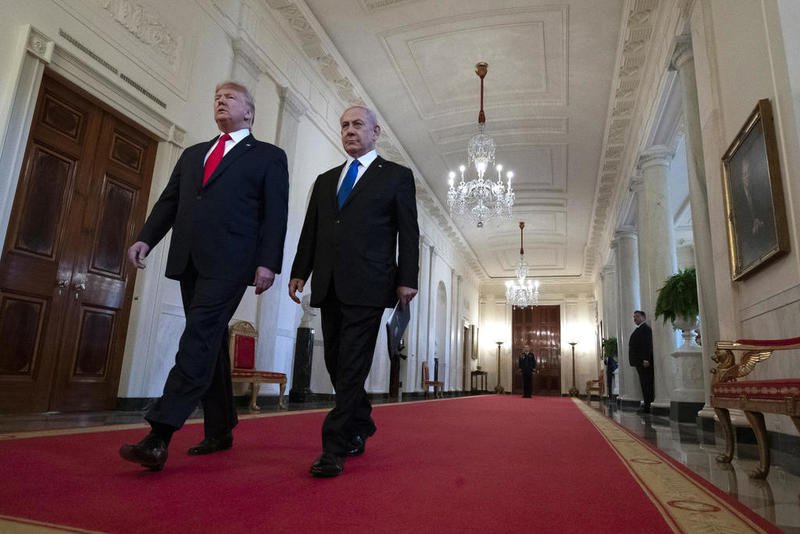

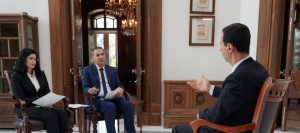
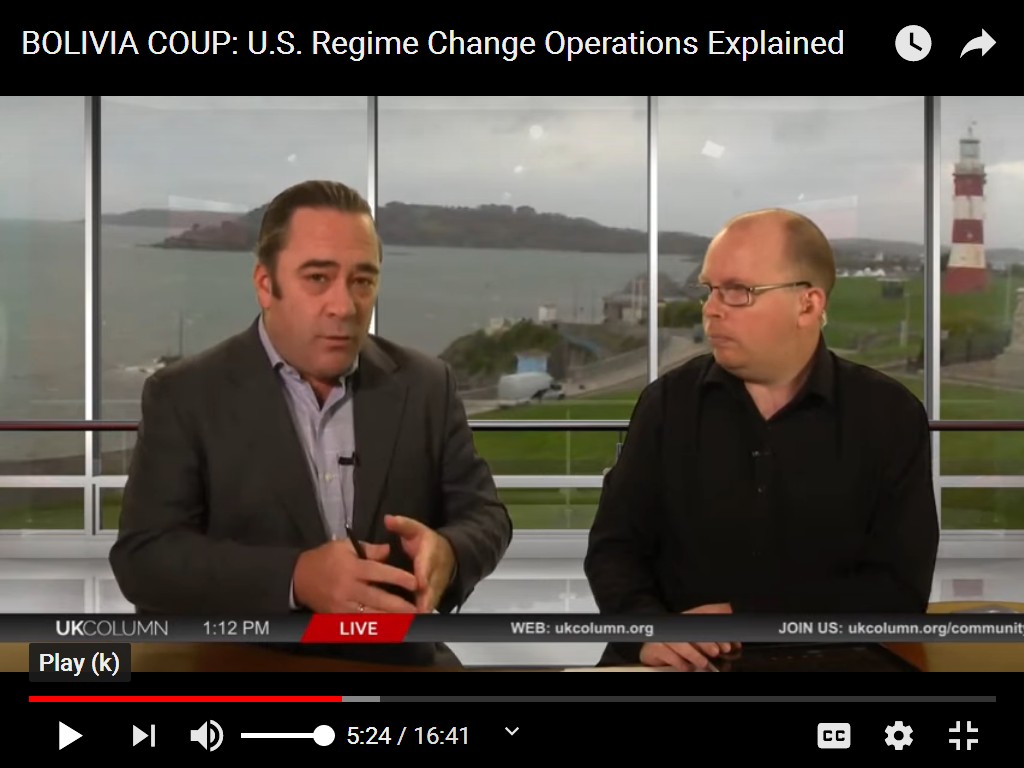


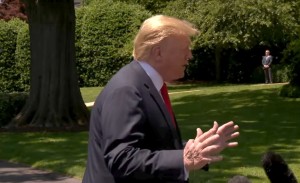




















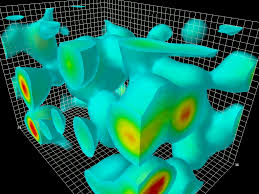











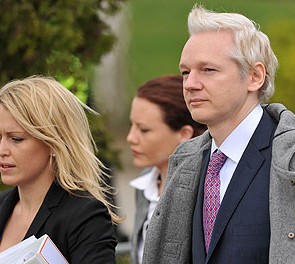









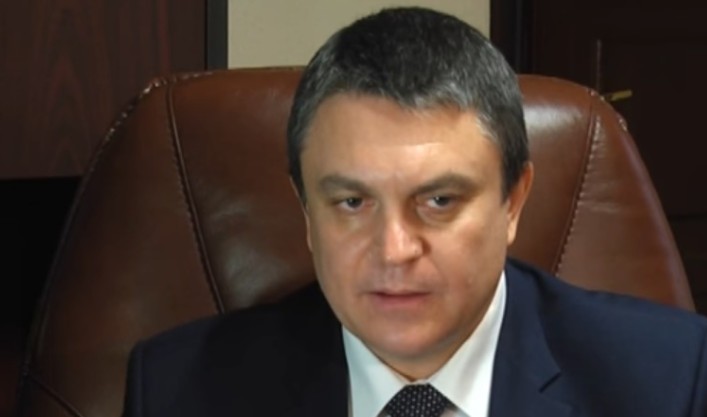






Discussion
No comments yet.